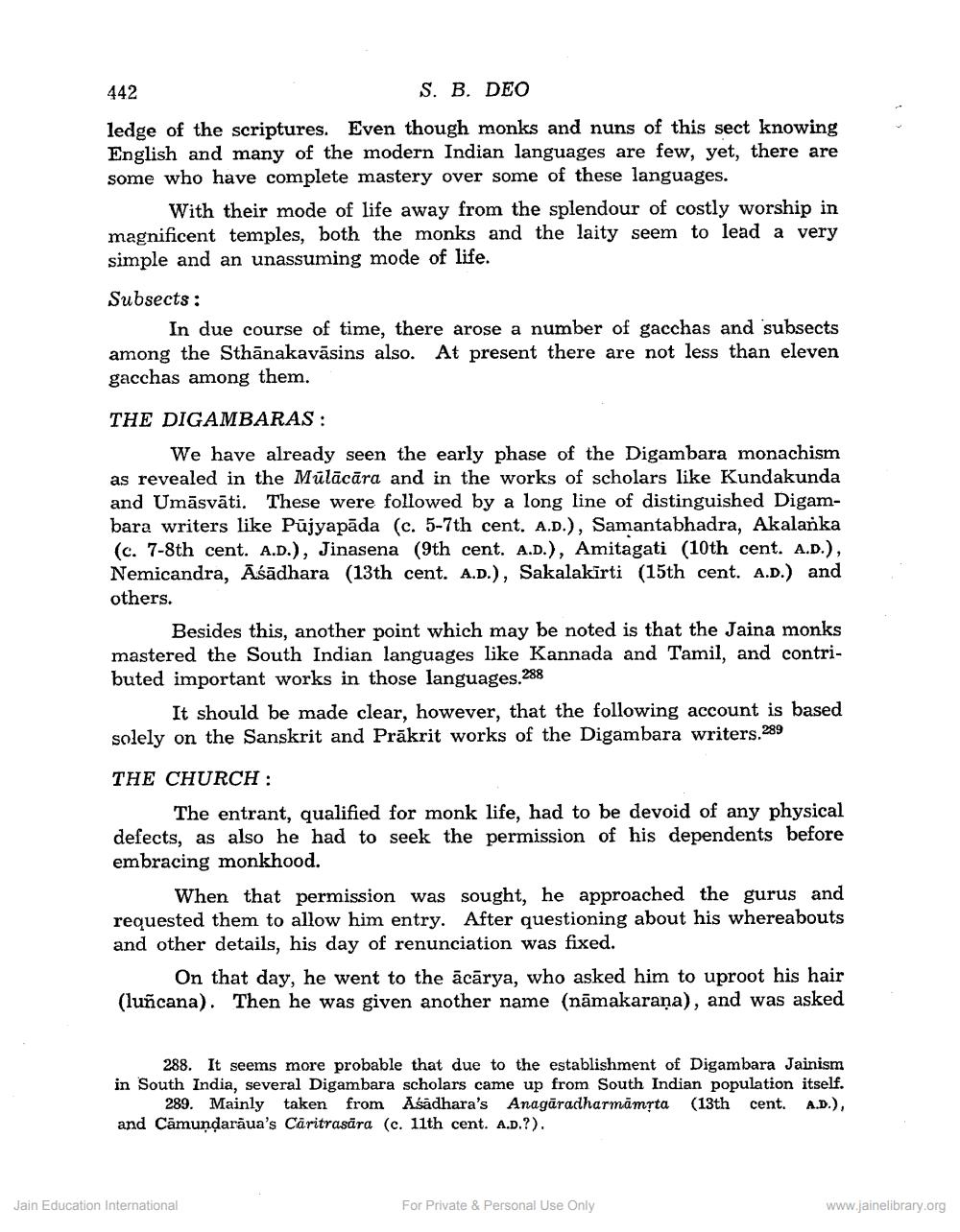________________
442
S. B. DEO
ledge of the scriptures. Even though monks and nuns of this sect knowing English and many of the modern Indian languages are few, yet, there are some who have complete mastery over some of these languages.
With their mode of life away from the splendour of costly worship in magnificent temples, both the monks and the laity seem to lead a very simple and an unassuming mode of life.
Subsects:
In due course of time, there arose a number of gacchas and subsects among the Sthānakavāsins also. At present there are not less than eleven gacchas among them.
THE DIGAMBARAS :
We have already seen the early phase of the Digambara monachism as revealed in the Mülācāra and in the works of scholars like Kundakunda and Umāsvāti. These were followed by a long line of distinguished Digambara writers like Pūjyapāda (c. 5-7th cent. A.D.), Samantabhadra, Akalanka (c. 7-8th cent. A.D.), Jinasena (9th cent. A.D.), Amitagati (10th cent. A.D.), Nemicandra, Āśādhara (13th cent. A.D.), Sakalakirti (15th cent. A.D.) and others.
Besides this, another point which may be noted is that the Jaina monks mastered the South Indian languages like Kannada and Tamil, and contributed important works in those languages.288
It should be made clear, however, that the following account is based solely on the Sanskrit and Prākrit works of the Digambara writers.289
THE CHURCH:
The entrant, qualified for monk life, had to be devoid of any physical defects, as also he had to seek the permission of his dependents before embracing monkhood.
When that permission was sought, he approached the gurus and requested them to allow him entry. After questioning about his whereabouts and other details, his day of renunciation was fixed.
On that day, he went to the ācārya, who asked him to uproot his hair (luñcana). Then he was given another name (nāmakarana), and was asked
288. It seems more probable that due to the establishment of Digambara Jainism in South India, several Digambara scholars came up from South Indian population itself.
289. Mainly taken from Asadhara's Anagāradharmāmsta (13th cent. A.D.), and Cāmundarāua's Caritrasāra (c. 11th cent. A.D.?).
Jain Education International
For Private & Personal Use Only
www.jainelibrary.org




